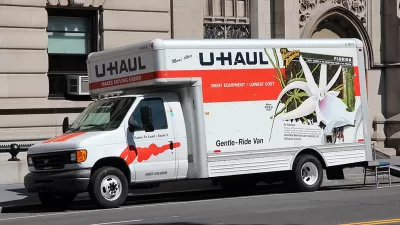Recent stories claiming that millenials either (a) prefer cities to suburbs or (b) prefer suburbs to cities both have some basis in reality.

Over the past year or so I've seen numerous articles and blog posts asserting that millennials are moving to cities in large numbers, while other articles and blog posts assert that millennials prefer suburbs to cities.
So do millenials prefer cities or suburbs? The right answer is "yes." On the one hand, it appears to me that millennials are more likely to favor city life than 20- and 30-somethings of 30 years ago. Thus, in a sense it is true that millennials favor cities. On the other hand, it is equally true that most millennials live the same kind of commuting lives as their parents, living in suburbs (or suburb-like areas that are technically within city limits) and driving to work.
How can both propositions be true? Let’s imagine a simple hypothetical. Suppose that there are 1,750 recent college graduates in metropolitan Townsville. Two hundred and fifty of them live downtown, 600 of them live in the city outside downtown, and 900 of them live in suburbia. Let us further suppose that this small region has 500 downtown residents, 3,000 city residents, and 8,000 suburbanites (not counting the above-mentioned millennials).
The 250 new graduates who move downtown have caused downtown's population to increase considerably, from 500 to 750. Thus, one plausible headline could be: Millennials Cause Downtown Population to Increase by 50 Percent. Even though only about 15 percent of the graduates favor downtown, downtown's preexisting population is so small that just a few hundred new residents will make the downtown considerably more populated.
Similarly, the new graduates have caused the total urban population to increase from 3,500 (500 downtown, 3,000 in the rest of the city) to 4,350 (3,500 plus the 250 new downtown residents plus the 600 new non-downtown residents). So another completely true headline could be: Millennials Cause City Population to Increase By Over 20 Percent.
But nevertheless, the majority of recent graduates (900 of the 1,750) live in the suburbs. Thus, the headline College Graduates Mostly Move to Suburbs would be just as true as the first two headlines. But even so, the graduates would be more likely to live in the city than the rest of the population; only 51 percent of them live in suburbia, as opposed to about 70 percent of the region's other inhabitants.
So even if a minority of millennials (or any other group) choose city living, that group can create a considerable increase in urban population. And if urban housing supply is not rising rapidly enough to accommodate this increase, prices may rise more rapidly in desirable urban neighborhoods than in suburbs- a fact which may explain why housing costs are rising more rapidly in urban neighborhoods and other walkable areas:

Planetizen Federal Action Tracker
A weekly monitor of how Trump’s orders and actions are impacting planners and planning in America.

Restaurant Patios Were a Pandemic Win — Why Were They so Hard to Keep?
Social distancing requirements and changes in travel patterns prompted cities to pilot new uses for street and sidewalk space. Then it got complicated.

Map: Where Senate Republicans Want to Sell Your Public Lands
For public land advocates, the Senate Republicans’ proposal to sell millions of acres of public land in the West is “the biggest fight of their careers.”

Maui's Vacation Rental Debate Turns Ugly
Verbal attacks, misinformation campaigns and fistfights plague a high-stakes debate to convert thousands of vacation rentals into long-term housing.

San Francisco Suspends Traffic Calming Amidst Record Deaths
Citing “a challenging fiscal landscape,” the city will cease the program on the heels of 42 traffic deaths, including 24 pedestrians.

California Homeless Arrests, Citations Spike After Ruling
An investigation reveals that anti-homeless actions increased up to 500% after Grants Pass v. Johnson — even in cities claiming no policy change.
Urban Design for Planners 1: Software Tools
This six-course series explores essential urban design concepts using open source software and equips planners with the tools they need to participate fully in the urban design process.
Planning for Universal Design
Learn the tools for implementing Universal Design in planning regulations.
Heyer Gruel & Associates PA
JM Goldson LLC
Custer County Colorado
City of Camden Redevelopment Agency
City of Astoria
Transportation Research & Education Center (TREC) at Portland State University
Camden Redevelopment Agency
City of Claremont
Municipality of Princeton (NJ)





























